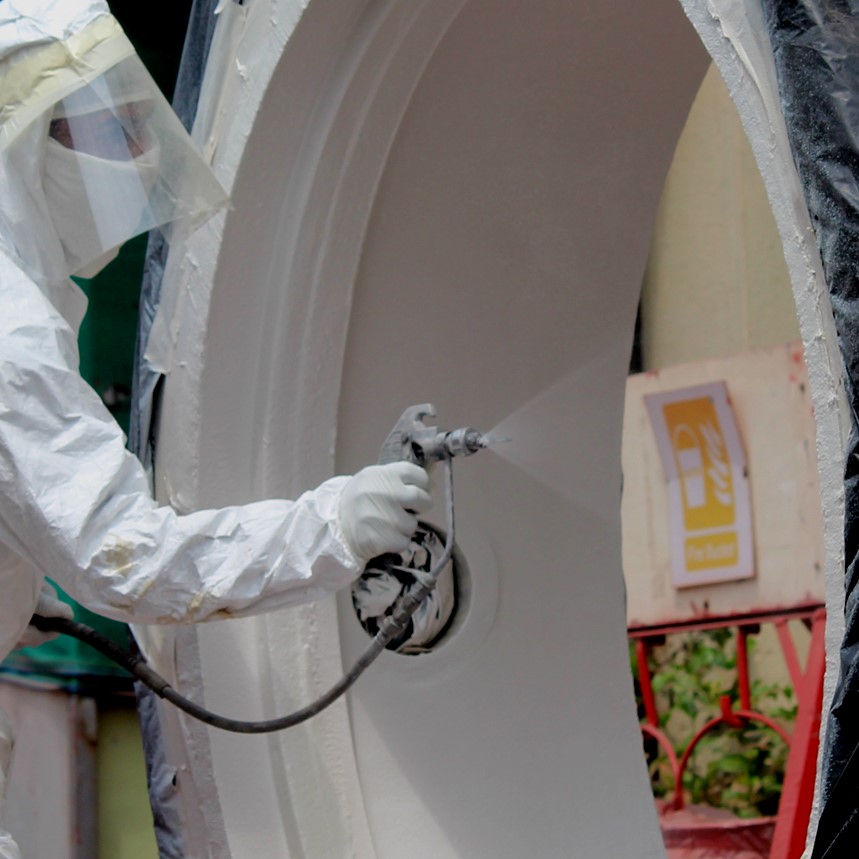Applying Coating Correctly:
Successful application of protective coatings is pivotal to ensuring infrastructures receiving coatings withstand potential corrosion. There are several detrimental factors to consider if the coating is applied incorrectly and corrosion does occur. Some factors may include:
- Bodily harm including irritation and respiratory damage
- Loss of production with machinery being inoperable
- Financial strain with replacements or repairs
- Adverse incidents in public locations
- Loss in revenue with downtime
Spray Techniques:
- Hand- Striping
An important first step when applying a coating correctly is hand-striping. Before the first general coat is applied it is recommended to complete an extra spray pass or stripe coat. This coats all edges, corners, joints, and other irregular surfaces to ensure all surfaces are ready for the first coat and an adequate film can develop.
- Cross-layer application
Applicators often spray coatings with a horizontal pass first which unfortunately can lead to a series of issues that may have a detrimental effect on the coating’s performance and service life. By beginning with a horizontal application, a dry edge can eventuate in the bottom of the spray pattern and from there gravity will drag the liquid film causing an over thickness which can sag and run. To avoid this, it is essential the vertical passes of the spray gun are used first followed by horizontal passes, creating a cross-layer application.
- Why is it important to apply a vertical pass first?
Beginning with a vertical pass avoids a defined edge which a horizontal pass can cause. Increasing the stability of the coating, vertical application technique also aids in the uniform thickness of the applied film across a large area.
To maximise mechanical adhesion and encourage optimum surface coverage, the distance of the spray gun to the surface is extended to approximately 24 to 36 inches to avoid an orange peel appearance and give more even coverage.
- Corners and Edges
Another critical aspect of spraying technique is the correct approach to spraying corners and edges. When coating a corner or edge, particularly one with a small radius, the natural phenomenon of the paint is to retract due to surface tension this can be exacerbated by incorrect application techniques. If the applicator simply sprays each face and does not treat the corner, the edge will not be protected, and corrosion will occur more rapidly.
- Atomisation
Paints and coatings must be atomised satisfactorily to facilitate homogeneous and uniform coverage. When atomisation is not correct, the materials ability to coalesce will be compromised and the coating may have a textured finish similar to that of orange peel. This effect may have an impact on the coatings performance in its intended service.
- Thickness testing
Ensuring the thickness of the anti-corrosion coating has been correctly applied is vital to the success or failure of the product. Corrocoat offers inspection services to ensure quality assurance and standards have been met. We perform a thickness test using a coating thickness gauge.
Conclusion:
The application of protective coatings can greatly affect whether infrastructures are protected against corrosion. Correct techniques are a simple solution to ensuring the successful outcome of anti-corrosion coatings. At Kirloskar Corrocoat, all our products are applied within stringent standards, and everything we coat with our Kirloskar Corrocoat product range is returned with a quality assurance certificate.




.png)

Comments